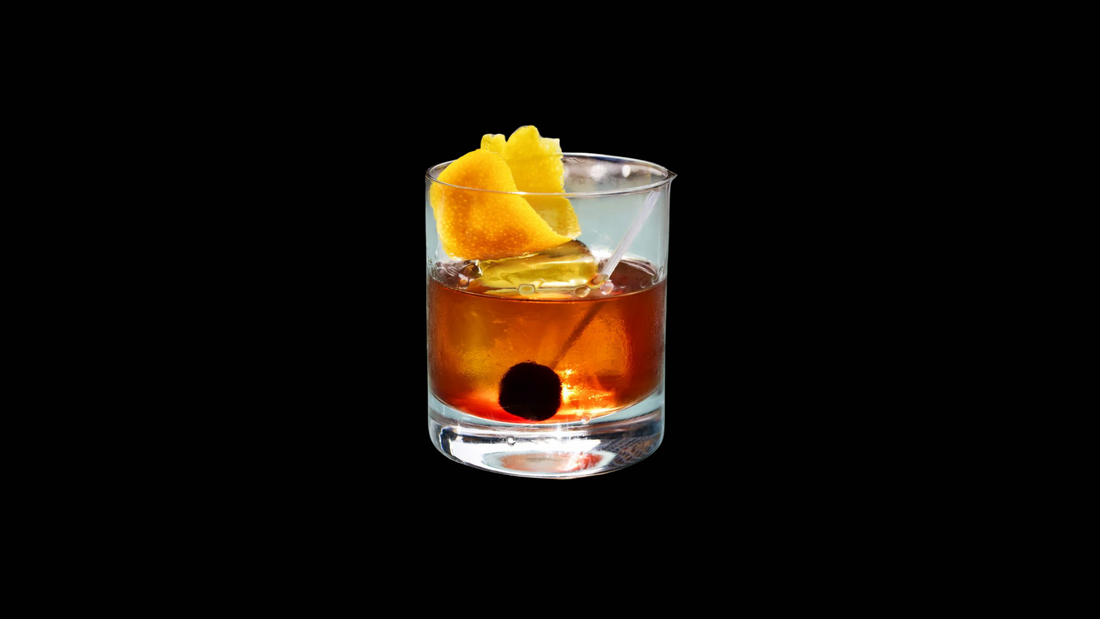
The Manhattan — Elegance in the City
By Rafi Mercer
Some cocktails feel rural, others coastal, others timeless. The Manhattan belongs to the city. It is the drink of low lights and tall buildings, polished bars and quiet conversations. Elegant, urban, slightly aloof, yet welcoming if you approach it properly. If the Old Fashioned is whisky at its most elemental, the Manhattan is whisky dressed for the evening — vermouth smoothing its edges, bitters sharpening its line, glass stem held delicately in hand.
The story begins in New York, sometime in the late 19th century, though like many origins it is wrapped in myth. A banquet at the Manhattan Club, a host of fashionable guests, a drink mixed from rye whisky, sweet vermouth, and bitters. Whatever the details, what emerged became a standard, a cornerstone of cocktail history. To order a Manhattan is to place yourself in a lineage of city drinkers, where style and substance meet.
The recipe has not changed much in over a century:
The Manhattan
- 60ml (2oz) rye whisky (bourbon if you prefer roundness)
- 30ml (1oz) sweet vermouth
- 2 dashes Angostura bitters
- Maraschino cherry, to garnish
Method: Stir the whisky, vermouth, and bitters over ice until chilled. Strain into a chilled coupe or martini glass. Garnish with a cherry dropped into the glass.
The Manhattan is all about proportion. Too much vermouth and it sags into sweetness. Too little and it loses its elegance. Stirred properly, it becomes harmony in liquid form: the spice of rye, the herbal depth of vermouth, the aromatic lift of bitters. Smooth, serious, quietly intoxicating.
Unlike the Sour, which refreshes, or the Old Fashioned, which grounds, the Manhattan transports. One sip and you feel the pulse of the city, the hum of late-night traffic, the low glow of jazz in a downtown bar. It is not about quenching thirst. It is about setting mood.
For me, the Manhattan pairs with Dexter Gordon’s Go or Lee Morgan’s Cornbread. Records with poise, polish, confidence — not brash, not hurried, but assured. The whisky is the tenor sax, rich and direct. The vermouth is the rhythm section, providing texture and support. The bitters are the cymbals, small but essential. Together, they create a sound — or a drink — that is more than the sum of its parts.
The Manhattan has always felt like a drink for decision-makers. Something about the stemmed glass, the weight of the rye, the faint glow of vermouth suggests intent. It is not casual. It is not careless. It is a cocktail that shapes an evening, that asks you to sit straighter, to listen more closely, to step into the moment with elegance.
And yet, for all its seriousness, it is also optimistic. The Manhattan has survived every shift in drinking fashion, every wave of mixology, every new trend. It remains because it has balance, because it speaks of place, because it does not chase novelty. Like the best Blue Note records, it has become timeless by being entirely itself.
Perhaps that is why I find myself returning to it. In a quiet bar, in the late part of the evening, when the room is dim and the record has slowed. The Manhattan steadies me, lifts me, makes the city outside feel less overwhelming. It is elegance in the glass, presence in the moment, a drink that connects you to those who have sat in similar rooms for more than a century.
Rafi Mercer writes about the spaces where music matters. For more stories from Tracks & Tales, subscribe, or click here to read more.














